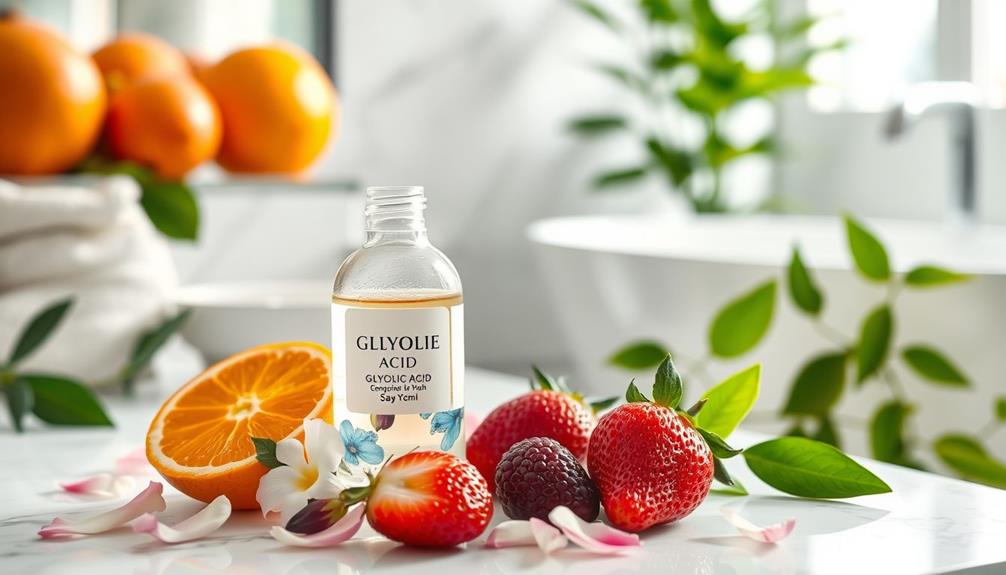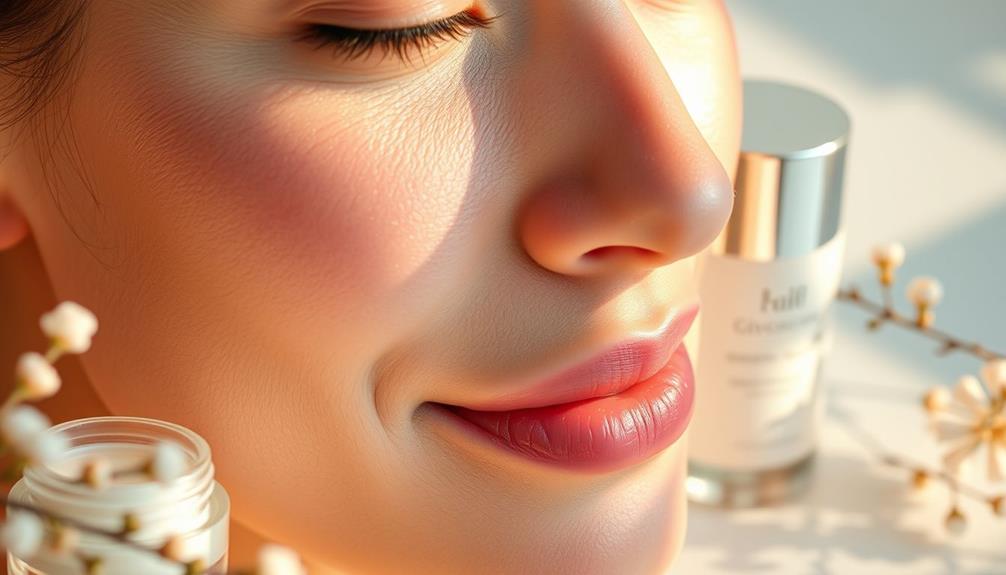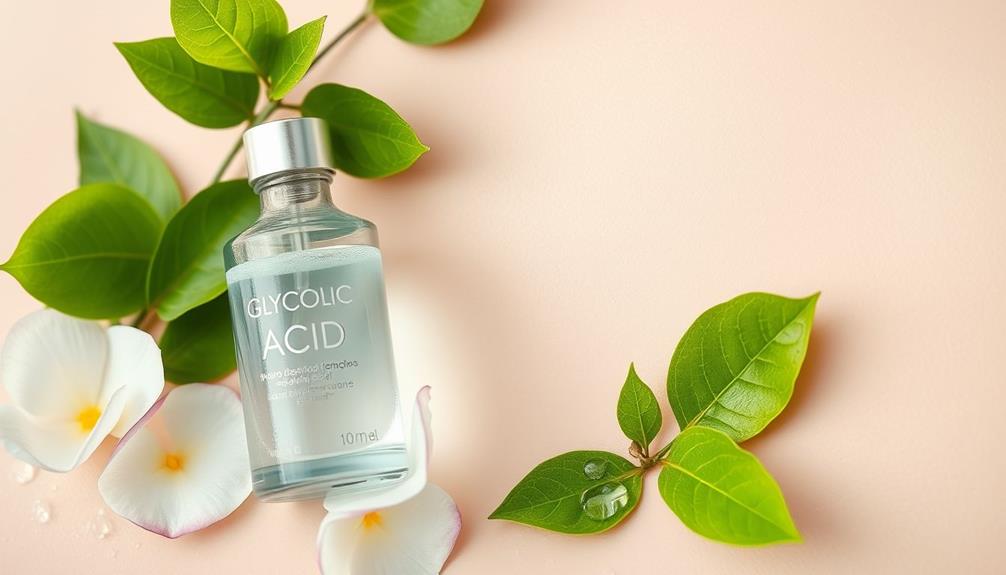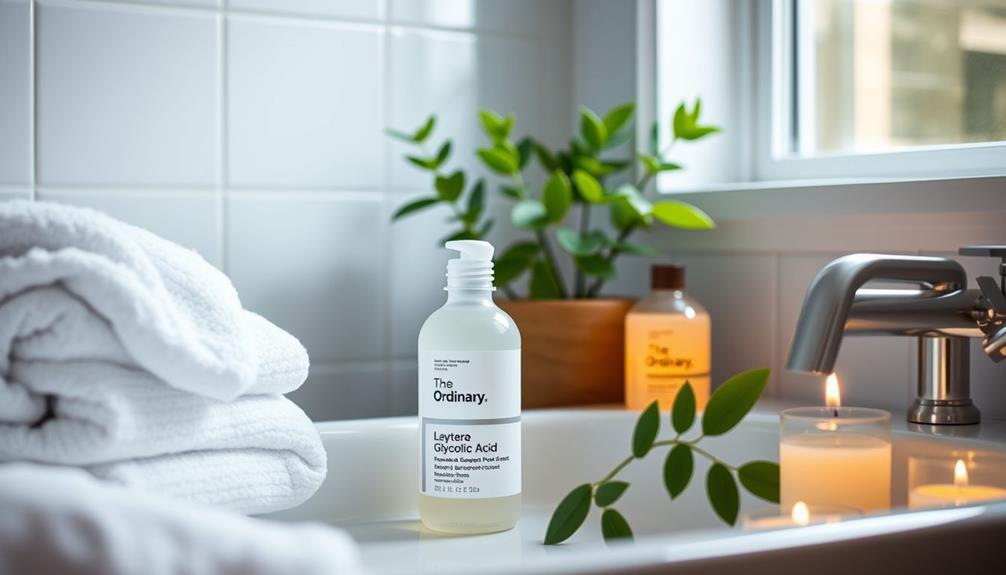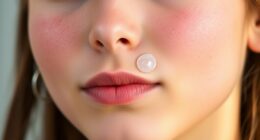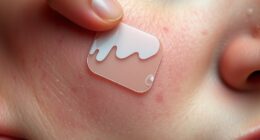10% glycolic acid is a game-changer for your skin. It works by exfoliating dead skin cells, enhancing your complexion, and promoting cell turnover. You'll notice a smoother texture and more even tone, plus it helps combat acne and reduces fine lines by stimulating collagen production. This concentration is ideal for most skin types, but remember to start slow and use it a few times a week to gauge your skin's response. Always follow up with sunscreen during the day, as it can increase sensitivity. Keep going to discover more about incorporating this powerhouse ingredient into your routine!
Key Takeaways
- 10% Glycolic Acid enhances skin texture and tone, promoting a smoother, more radiant complexion.
- It accelerates cell turnover, helping to reduce acne blemishes and hyperpigmentation.
- As a humectant, it attracts moisture, preventing dryness and improving hydration.
- Regular use stimulates collagen production, reducing fine lines and boosting skin elasticity.
What Is Glycolic Acid?
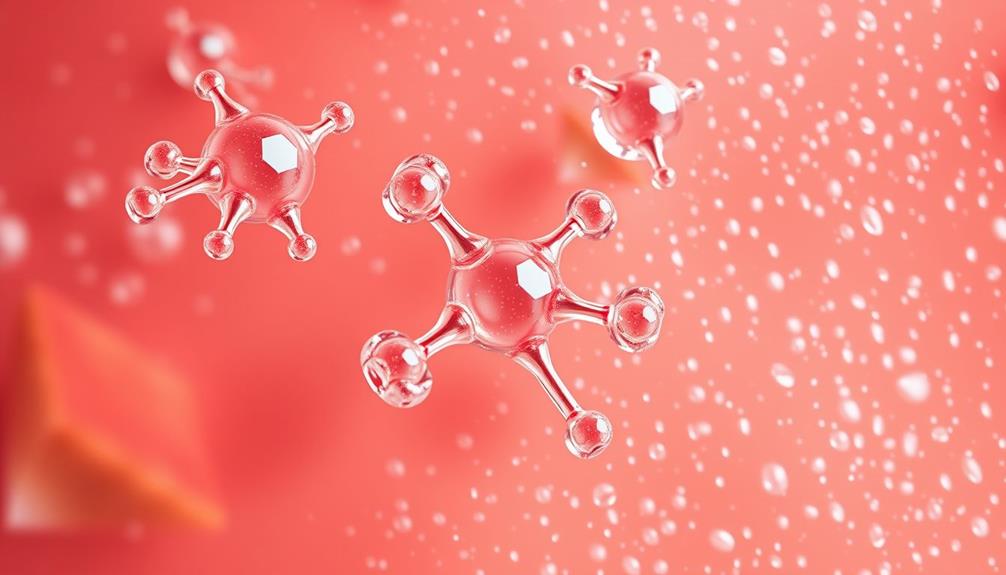
Glycolic acid, derived from sugar cane, is the smallest alpha hydroxy acid (AHA) that penetrates your skin deeply to promote effective exfoliation. It works by dissolving the bonds between dead skin cells, accelerating cell turnover. This process helps you achieve a smoother, more radiant complexion.
If you struggle with skin concerns like acne, hyperpigmentation, or signs of aging, glycolic acid can be a game-changer. Additionally, incorporating aromatherapy techniques alongside glycolic acid can further enhance your skincare routine by promoting relaxation and overall well-being.
As you regularly use glycolic acid, you'll notice improvements in your skin texture. It not only aids in eliminating dead skin cells but also enhances your skin's hydration levels. This hydration boost is essential for maintaining a youthful appearance and supports collagen production, which is vital for skin elasticity.
Available in various formulations, glycolic acid typically ranges from 4% to over 20% in concentration, with higher percentages often recommended for professional use.
Whether you choose a cleanser, serum, or peel, incorporating glycolic acid into your skincare routine can appreciably improve your skin's overall health and appearance, helping you tackle those pesky skin concerns effectively.
Benefits of 10% Glycolic Acid

Using a 10% concentration of glycolic acid can dramatically enhance your skin's texture and tone, revealing a fresher, more radiant complexion. One of the key benefits of this concentration is its ability to promote cell turnover, effectively dissolving the bonds between dead skin cells. This process not only improves skin texture but also helps even skin tone, making it ideal for those struggling with dullness or uneven pigmentation.
Furthermore, incorporating essential oils for relaxation into your routine can complement the effects of glycolic acid by promoting overall skin health and well-being.
Additionally, 10% glycolic acid acts as a humectant, attracting moisture to your skin and helping to keep it hydrated. This moisture boost is essential in preventing dryness, especially if you have acne-prone skin. Regular use can also lead to a noticeable reduction in acne blemishes, giving you clearer skin.
Furthermore, studies show that this concentration can greatly reduce fine lines by stimulating collagen production. Increased collagen levels improve skin elasticity, giving your face a firmer, more youthful appearance.
How to Use Glycolic Acid

To effectively incorporate glycolic acid into your skincare routine, start with a low concentration and gradually increase as your skin adjusts. Begin with a 5-10% topical glycolic acid, and use it 2-3 times a week. Monitor your skin's response and sensitivity, then adjust the frequency accordingly. Always conduct a patch test before full application to check for any skin irritation, especially if you have sensitive skin.
Here's a simple guide on how to use glycolic acid:
| Step | Action |
|---|---|
| 1. Start Low | Use a low concentration (5-10%) glycolic acid product. |
| 2. Apply at Night | Apply glycolic acid products at night to minimize sun sensitivity. |
| 3. Follow Up | Always apply sunscreen during the day to protect your skin. |
| 4. Avoid Mixing | Don't layer with other strong exfoliants or retinoids. |
Potential Risks and Side Effects
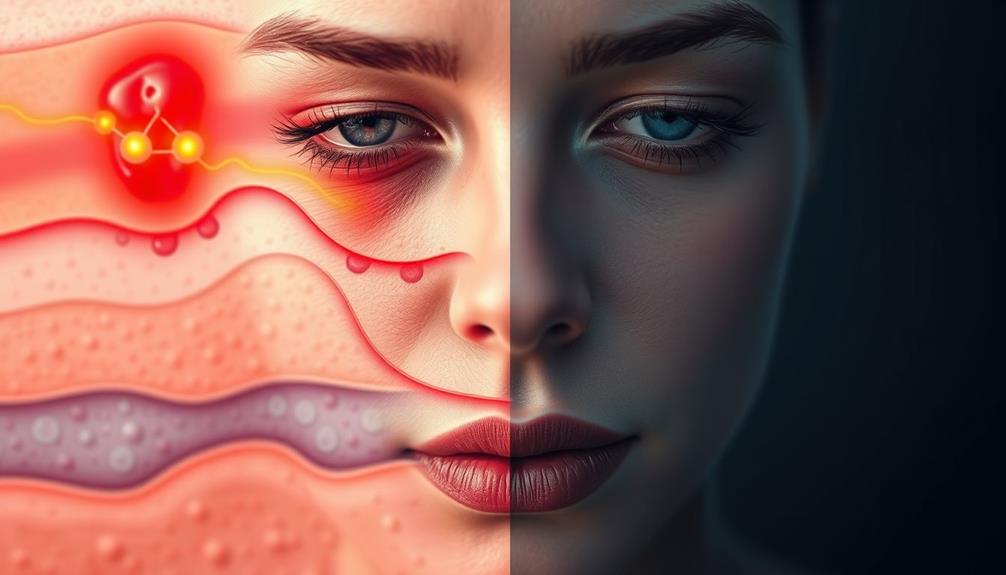
While incorporating glycolic acid into your routine can offer great benefits, it's important to be aware of the potential risks and side effects that may arise.
One common issue is increased skin sensitivity, particularly to UV rays, making broad-spectrum sunscreen vital to protect your skin.
You might experience side effects like irritation, redness, and peeling, especially when using higher concentrations or when you first start using glycolic acid. To guarantee peak results, it's also essential to maintain a balanced diet rich in nutrients that support skin health, as a healthy diet can enhance your skin's resilience against irritants balanced diet's role.
If you have sensitive skin or conditions like rosacea, you could face heightened reactions, such as burning or stinging sensations. It's important to monitor how your skin responds and adjust your application frequency accordingly.
Overusing glycolic acid can lead to hyperpigmentation or worsen existing skin conditions, so start slow and increase gradually.
Additionally, avoid applying glycolic acid to broken or inflamed skin, as this can exacerbate irritation or cause adverse reactions.
Being mindful of these potential risks can help you enjoy the benefits of glycolic acid while minimizing negative effects.
Always listen to your skin, and if you have concerns, consult a dermatologist for personalized advice.
Glycolic Acid in Skincare Products
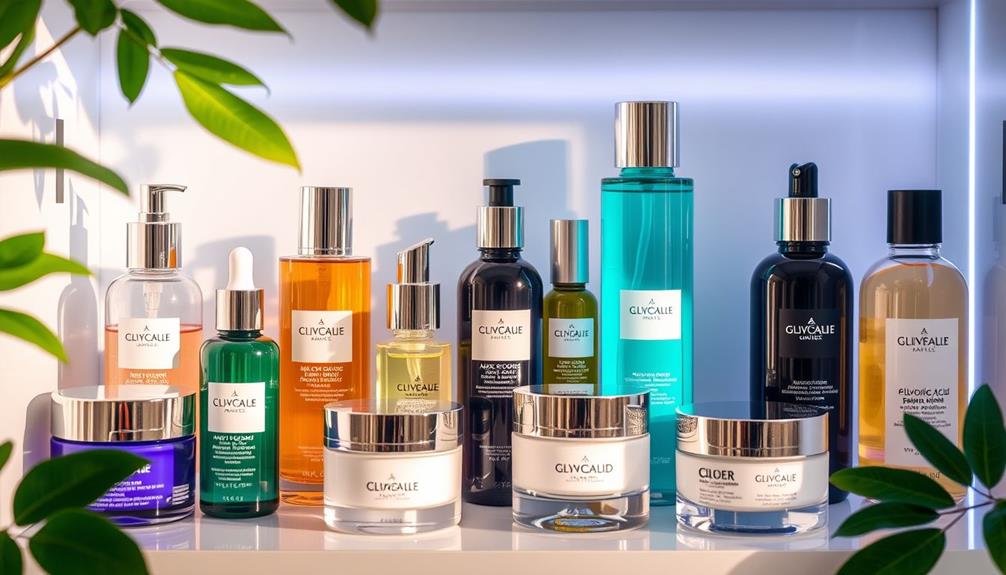
Found in a wide range of skincare products, glycolic acid stands out for its powerful exfoliating properties and ability to enhance skin texture.
As the smallest alpha hydroxy acid (AHA), it penetrates deeply, promoting cell turnover and helping to improve skin texture. You'll find glycolic acid in cleansers, toners, serums, and creams, usually at concentrations of 4% to 10% for home use.
Incorporating a variety of food groups, such as fruits and vegetables, can also enhance skin health from within, supporting the benefits of topical treatments like glycolic acid a vibrant diet.
Regularly using glycolic acid can lead to cumulative benefits, like reduced fine lines and improved skin clarity. It also stimulates collagen production, which contributes to firmer, more youthful-looking skin.
However, be mindful of increased skin sensitivity that may occur; this makes it essential to apply broad-spectrum sunscreen daily to protect against sun damage.
Conclusion
Incorporating 10% glycolic acid into your skincare routine can be a game changer.
You'll likely notice smoother, brighter skin as it works to exfoliate and rejuvenate.
Just remember, like any powerful ingredient, a little goes a long way.
So, don't rush in; take your time to find the right balance for your skin.
With consistent use, you'll be well on your way to achieving that radiant glow you've always wanted.
So, why not give it a shot?
